Are you planning to start a blog or recently started one but not sure where it’s all taking you? I have been there and so have many other bloggers before.
There is just so incredibly much to learn and do all the time to keep the blog active and content current!
So, I have asked the experts, seasoned and professional bloggers, to give you their advice.
This post is jam-packed with the best blogging tips for beginners from established bloggers! You will learn about all the thing they would’ve loved to know when they only just started their own blogs, the mistakes they wished they had avoided and how to truly start building a successful blog in a professional way. Pure gold!
Best Blogging Tips For Beginners: “What I Wish I Knew Before Starting A Blog…”
#1 Create & Publish Good Content Consistently
When I first started blogging I spent my time on everything except the most important thing. Creating content.
Having the perfect theme, social media and building an email list are all important. But they mean nothing if you do not have solid content to keep people around and interested.
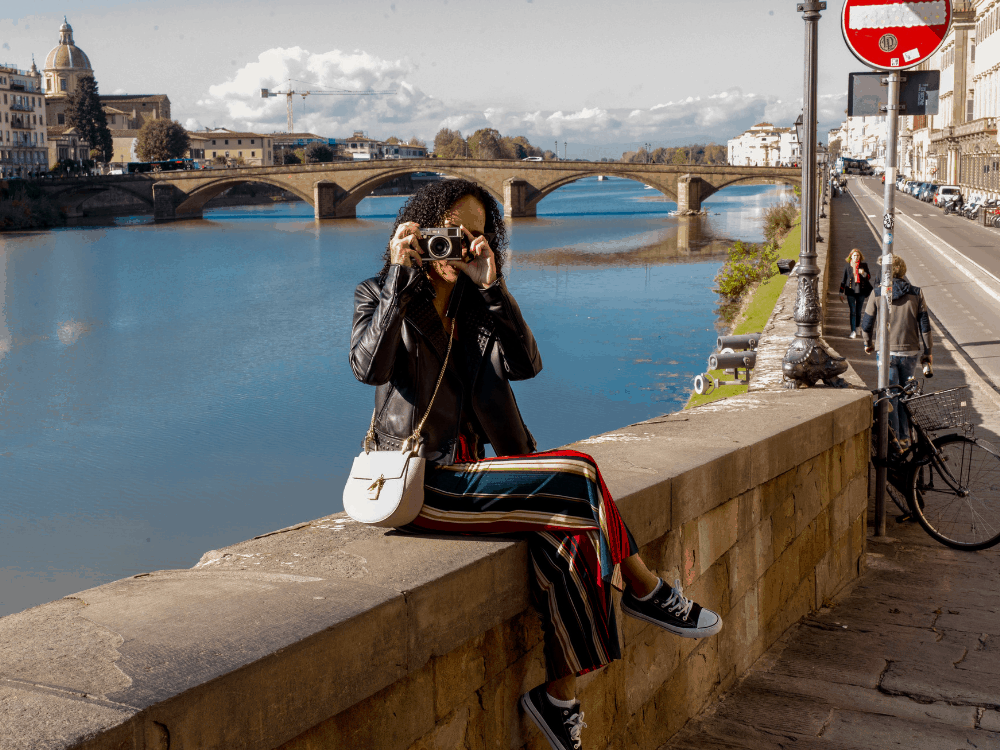
Yeah I had a pretty theme and my social media was looking good but no one was coming to visit. Why? Because I did not have enough valuable content.
Focusing on creating solid blog posts has been a game changer. Once I stopped focusing on all the other things and started focusing on creating good content everything started to fall into place. When you post good content consistently people will come.
The sooner you have content the sooner you can rank on Google. The more consistent content you have the more likely people are to follow you and sign up for your email list. And the more value you provide the more likely you will grow your social media following.
If I had to do it all over again I would start with consistently publishing valuable content as solid content trumps all.
Taima from Poorina Private Plane.
#2 You Have To Learn So Many Different Skills
Not so much as an “it’s super hard work” (although I have to admit yes it is!) but so I was aware of the vast array of roles you play as a blogger.

Videographer, photographer, writer, social media manager, SEO expert, digital marketing, accountant, website designer, coder, client outreach…the list goes on and on!
There’s so much more to becoming a blogger than just putting down your thoughts onto the inter webs – in fact that’s probably the easier skills out of them all to learn!
And even if you don’t end up making heaps directly off your blog – those skills will open up a huge array of digital nomad roles which still allow you to travel and work. And of course you’ll have your site and social channels as a portfolio of those skills too.
So if you have decided to start a blog, get ready for a solid learning curve and to dip your fingers into a lot of pies and become a digital jack of all trades!
Chris from Stoked For Travel.
#3 Develop A Niche And An Audience
When I started travel blogging 13 years ago, there weren’t a lot of travel bloggers out there and competition was not what it is today. We were inventing travel blogging, and there’s so much I wish I had known about the way things would develop!
Now, there are millions of travel bloggers and travel influencers and it’s very, very hard to stand out.
One of the best ways to both stand out and also help monetize is to gain niche authority. This is a concept that comes from the public relations world, but it’s extremely applicable to blogging.
The idea is that it’s better to be all things to some people, than to be all things to all people. If you look at some of the most successful travel bloggers, they are known for their niche:
- Nomadic Matt and budget travel.
- The Planet D and adventurous couple travel.
- Adventurous Kate and solo female travel.
These people never tried to be all things to all people.
When you gain niche authority, people trust you. They are more willing to seek your advice and recommendations AND buy from you. I’m known for my India travel expertise, so when I recommend anything to do with India, I am able to convert.
In fact, I recently started tours to India, designed to relieve the worries of first time visitors, to help my readers travel to India. This is hard-earned knowledge that I wish I knew from the beginning!
P.S. My other tip is get a reliable and searchable photo management system in place as soon as possible! I have 35,000 + photos (probably way more) and I have no idea where anything is! Arrrrghhhhhh.
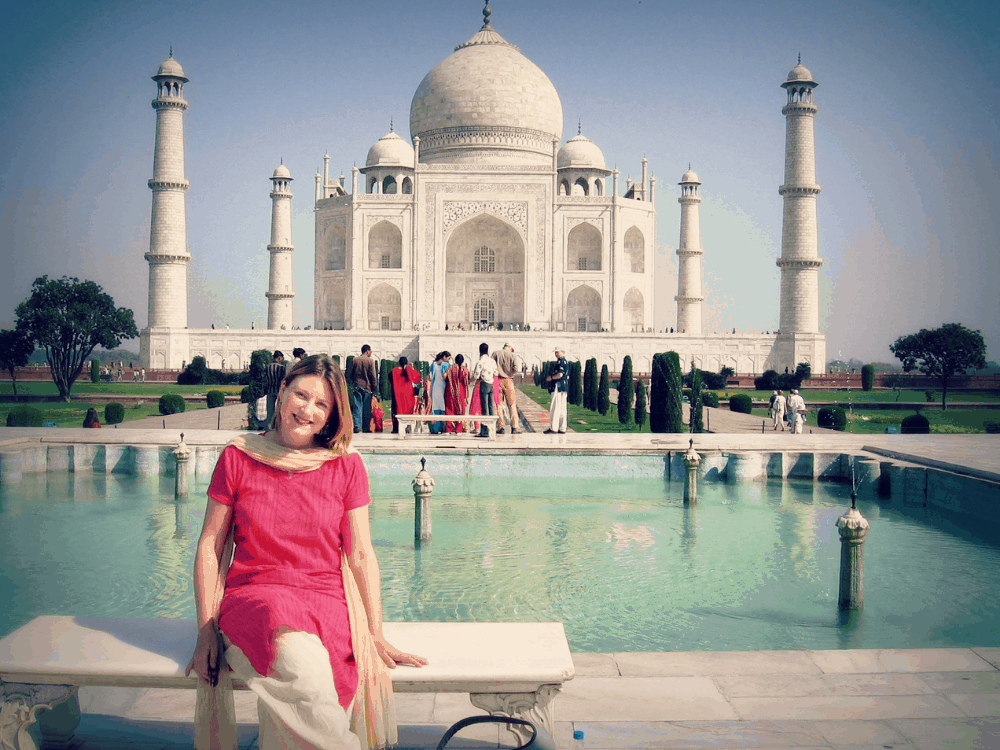
Mariellen Ward from Breathe Dream Go.
#4 Build An Email List From The Start
When I first began to take my blog seriously as a side business, I saw all of these successful full-time travelers curating their lives for social media. I thought for sure that a large Instagram following would drive lots of traffic to my website. I began putting much of time into having a social media presence.
I soon realized that I was doing things backwards. I was trying to drive an audience to my blog via social media when in reality a large social media following will come from having a good blog. I redirected my efforts and began focusing on building my email list. Instagram and Facebook algorithms change, but my email list is fully controlled by me.
The most impactful move I made in growing my email list was creating an appealing incentive to sign up. Previously, I had offered a simple packing list, but it wasn’t enough to entice potential readers.
So I created a ten-page eBook that was all about the basics of getting into wilderness backpacking. I made it look visually appealing, and I had friends give me feedback on it. Finally, I started offering it as my email incentive, and my readers actually wanted it enough to sign up for my list.
My best advice is to put effort into growing your email list. Still have a presence on social media, but don’t focus on it too much.
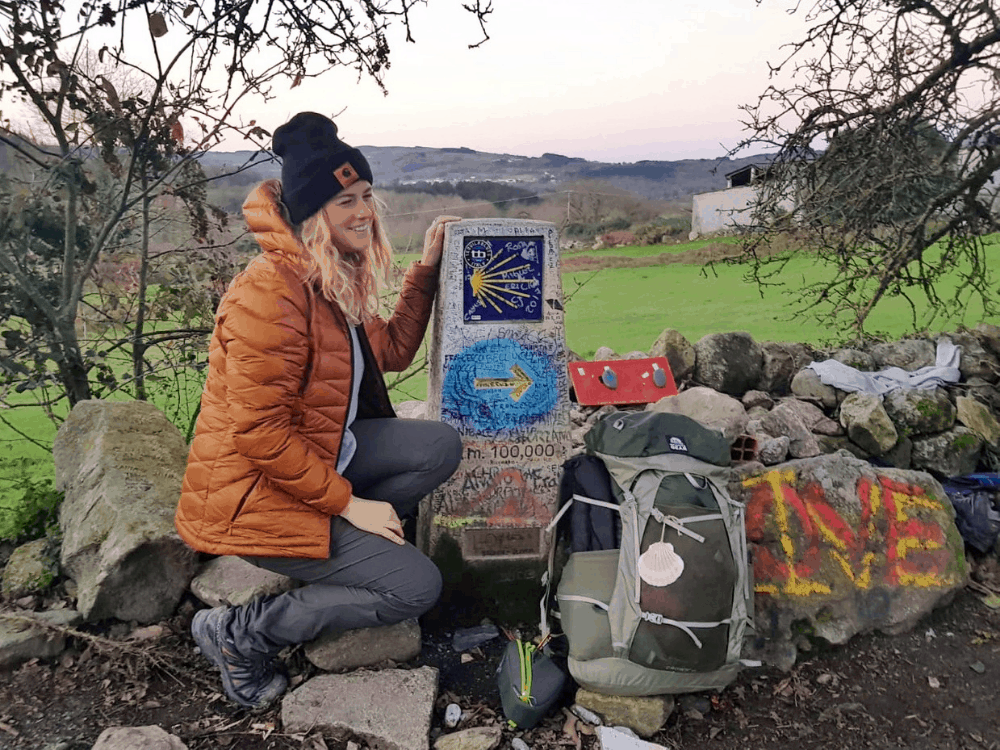
Megan Maxwell from Mountains With Megan.
#5 Narrow Down Your Audience And Hone In Your Voice
When you’re first starting a travel blog, it can seem like your to-do list is never-ending: pick a good name, learn SEO strategies, come up with a beautiful design, write tons of content… It all can be very overwhelming.
One thing I find many bloggers skip over is taking the time to identify their audience. When I first started travel blogging, I didn’t put a ton of thought into this. I guess I figured I wanted as many people to read my blog as possible — whether they were a retired couple or a twenty-something backpacker — so I wrote for them all. But the thing is that when you try to write “for everyone”, you’re going to connect with no one.
Something that many people forget about blogging is that building a loyal audience can be game changing. You want to create a voice and a style that draws readers to come back to your site over and over again. They will know your brand, and they’ll tell their friends about your blog. Even when algorithms change they will still come to your website, which can be incredibly powerful.
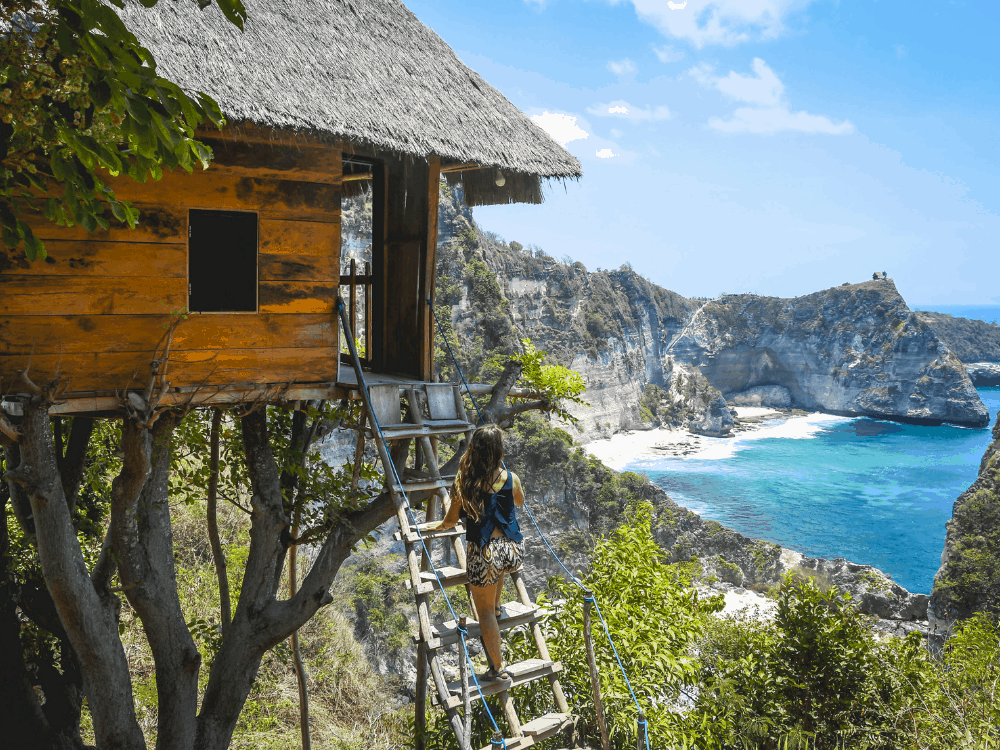
You want people to feel like you are speaking specifically to them when they read your writing. You want to connect on a level that makes them go, “Wow, they really get me.”
And the best way to do this is to narrow down who it is you are writing for: How old are they? What are they passionate about? What are their struggles? What makes their heart happy?
Keep this person in mind each time you write. And while you might be writing with a specific audience in mind, that doesn’t mean anybody else is going to connect with you. But narrowing down whom it is you’re writing for will give you a relatable and unmistakable voice. And that voice will be what makes you stand apart from the sea of bloggers out there who are writing to the masses with nobody specific in mind.
Katie Diederichs from Two Wandering Soles.
#6 How Important It Is To Create A System (And How To Go About Creating One That Works For You)
Although the names and sites have changed, I've been blogging since 2008. For the first ten or so of those years, I lacked a system for blogging. Looking back, this is perhaps my biggest regret.
I'll define a system as a step-by-step process you consistently follow. Think of it as a checklist if you prefer — whatever you call it, the consistency is the thing that matters.

Most of you know (or will come to realize) that a tool like a checklist ensures things get done. They ensure you get everything at the grocery store, for example, or ensures a flight successfully takes off.
So what goes into this system? For most bloggers, most of these would be required:
- Research keywords
- Use those keywords in the post
- Ensuring a new post is optimized for SEO
- Building internal links to this new post
- Share a post on social media
How this is done is up to you, of course. Your goals, along with your experience and willingness do them manually vs. automate them will dictate how exactly you do them.
The goal here is to get specific with these actions – which social networks? How will you share stuff? What tool will you use for researching keywords?
Chris from Worthy Go.
#7 How Addictive & Time Consuming Blogging Could Be
I started Tea and Cake for the Soul in 2015 for fun, initially to share my road trip stories and tips from the USA, along with other topics that I was passionate about.
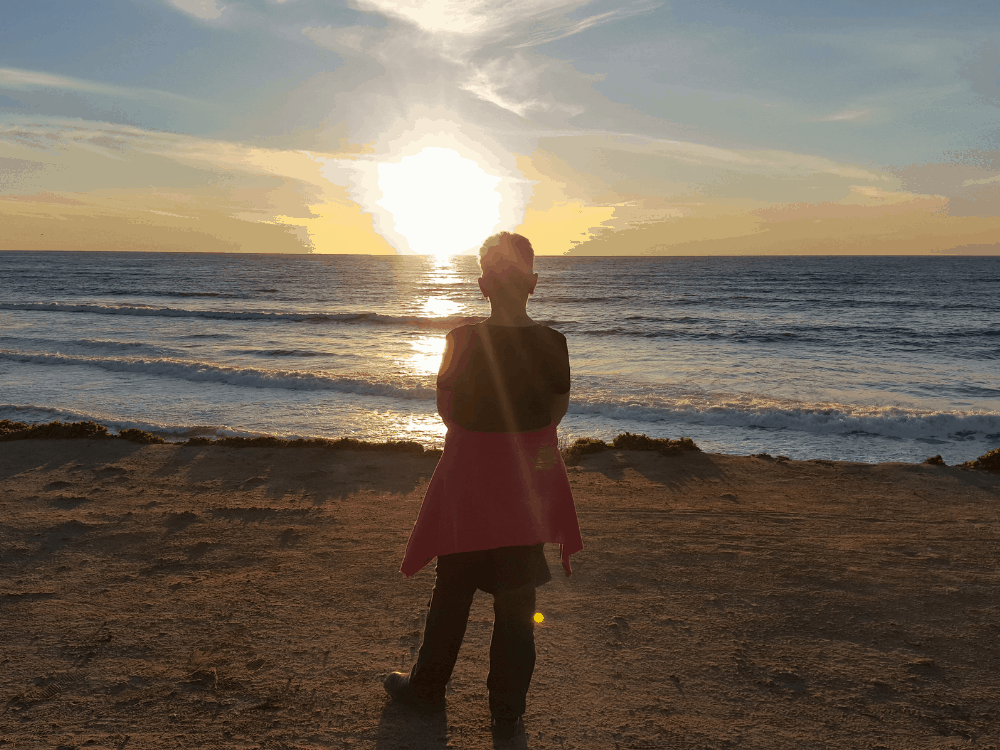
I found that I enjoyed writing and helping people out by giving them useful tips.
I had no idea back then quite how much was involved. I presumed I would write, add some pictures hit publish, and people would start reading it. I was pretty disappointed when I discovered my stats and found that very few people had read it at all.
It’s only been in the last year or so that I’ve started to learn about all the behind the scenes stuff that I had no idea existed, especially SEO.
I now know about the 20:80 equation. 20% of your time is writing, 80% is spent on promoting your posts on various social media and interacting on other blogs. Somewhere in there you have to find time to update and promote old posts and keep up to date with new blogging methods. It is a continual process. I am rewriting many of my posts incorporating what I know now.
Saying that it is extremely addictive. I find that my mind is constantly buzzing with new ideas and it’s hard to switch off from it. I don’t want to give it up though.
Jo from Tea And Cake For The Soul.
#8 Spend Your Time Growing And Doing Your Own Thing
Instead of watching and mimicking what others do, the best thing you can do to grow your own outlet is working on it.
As advisable as it is to keep an eye on what's going on in your industry, do not spend more than a few minutes every now and then doing so.
Your work will suffer otherwise as what will really set you apart is your personality and way of doing things.
In an overpopulated blogosphere, your authenticity will be key to differentiate your stuff from others. So stop wasting your time on social media and endlessly reading other blogs and start putting out your own work now. It pays off!
Inma Gregorio from A World to Travel.

#9 Blogging Success Requires More Than Just Great Content
I’m a writer by profession. I’ve been ghostwriting books and articles for execs for more than 25 years. So I started a blog because I thought it would be fun to share my travels and enjoy writing under my own byline.
But if I would’ve stopped there…
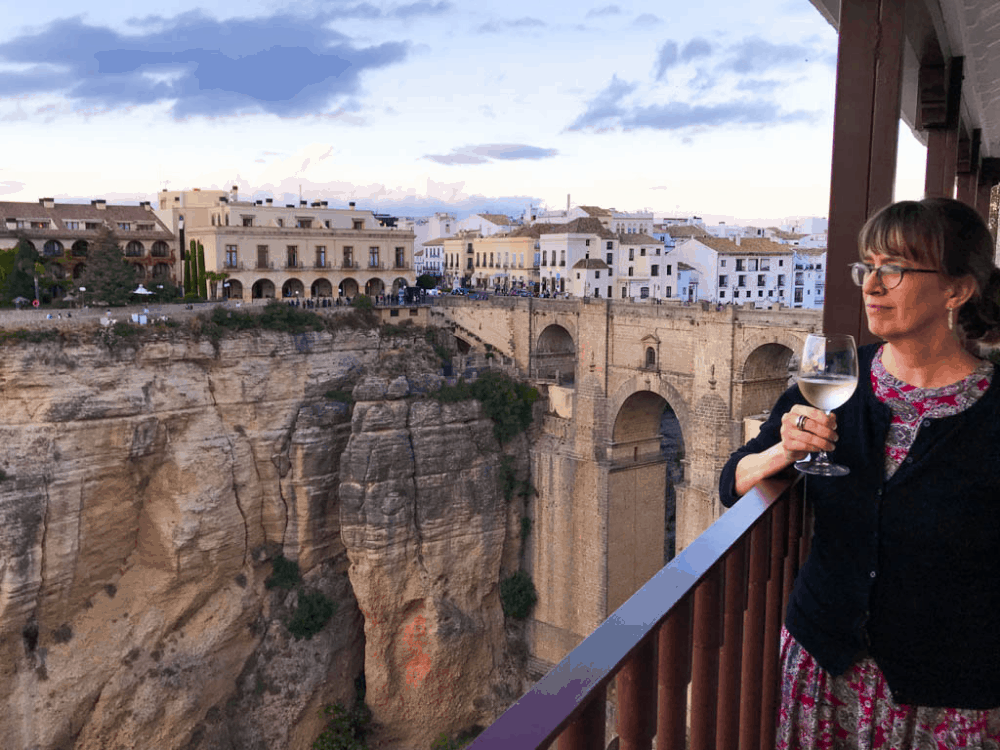
…just writing articles and popping them up on my blog, I’m pretty sure I’d have no readers today. Yes, it’s critical to provide in-depth detailed information that answers reader intent when looking for information, but that’s just the beginning!
The most powerful thing I’ve done to bring readers to my site was, by far, learning search engine optimization.
By learning what Google looks for to promote a post to the top of page one, I’ve learned how to consistently deliver and been rewarded with great traffic.
Success also requires networking. I’m pretty sure I’d be exactly nowhere today if I hadn’t joined about 15 Facebook groups where generous bloggers routinely share lessons learned, what’s working, and are happy to weigh in on questions from newbies.
I do my best to pay forward all the excellent advice that’s been shared with me since my early days on this journey. Conferences are great for in-person networking and learning, too.
Christina Roman from Explore Now or Never.
#10 Using A Good Keyword Research Tool
When we first started blogging, we thought the aim of the game was write posts we found interesting and flocks would come to read them.
Surely if we made the title gripping and the pictures beautiful, people would not be able to resist a click?!
When this failed to happen, our motivation to run our website began to dwindle. What is the point?, we thought, there are bigger and more successful blogs out there. Why would anyone read our articles when they can read theirs?
Sound familiar?
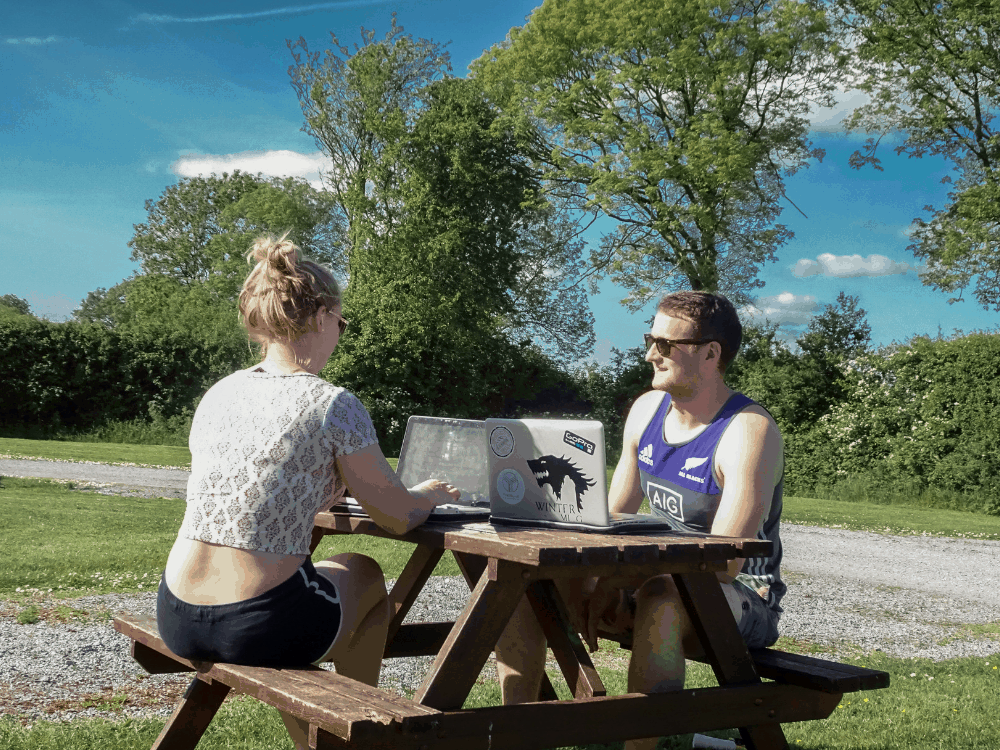
Well, Imagine if there was a tool where you can not only see what people are searching for on Google, but also how many people are searching for it and even how many bigger bloggers have written about it. This is not some magical, daydream that we just thought up. This tool is called Keysearch, and it has changed our blogging game forever.
With Keysearch, instead of writing about random topics and hoping people are going to want to read it, we are now able to research the questions people are asking and answer them to the fullest. We are able to predict what articles will do well, which ones will get the most traffic and which ones we want to monetize the most.
Keysearch has quite literally shown us that monetizing a website is not the daydream for small bloggers that we once thought. It is an entirely realistic, achievable and relatively easy target for anyone and everyone.
If you are new blogger, eager to start a website of your own, make Keysearch your number one weapon in growing your brand.
Gemma Louise from Highlands 2 Hammocks.
#11 Decide On An Ideal Permalink Structure From The Start
After more than 3 years of working away at my website, I very recently made a major modification that I totally wish I knew better about before I started a long time ago!
This change involved re-formatting my permalinks. Permalinks are the individual links of each post on your website, that once set up are slightly tricky (but not impossible) to change.
Permalinks typically can be formatted in three different ways:
- Your website URL + full date + post name. Example: .com/2019/06/02/postname
- Your website URL + only month & year + post name. Example: .com/2019/06/postname
- Your website URL + only post name. Example: .com/postname
In my instance, I had no idea what permalinks even were when I started blogging, and WordPress’ default setting is to use format #1 above. So, early on, I did see that my links were being presented using format #1, but again, I thought nothing of it.
Over the past 3 years, I’ve kept all of the posts on my website updated regularly, ensuring that my content is fresh and reliable. Fast forward to now, and suddenly I could see the major error of my ways (and perhaps now you can, too!).
How could my content possibly look fresh with a big fat outdated link at the top? Not only that, but after searching for my posts in Google, I also discovered that this was the date showing next to my search results!
If you are like me when I search Google, I totally disregard anything less than 1-2 years old, so even I myself would have disregarded my own content. Long story short: with travel blogging, you have got to stick with permalink format #3 from the start if the majority of your content is truly evergreen (meaning it’s useful even as time passes on).
Craig O'Brien from Vagabond Disposition.

#12 The Behind The Scenes Work For Each Post Devours A Lot Of Time
However long you think a post will take to write, multiply it by two, three or even (*facepalm*) four times. Yes, do not underestimate just how much time you will spend on the invisible stuff that makes up a single post.
If your only intention on wanting to start a blog is for your friends and family to check up on your round-the-world trip, then no problem, just write and leave it like that. However, it’s a totally different ball game when your intentions are turned to potentially wanting to make your blog an actual thing. By that, I mean a following and, fingers crossed, a side hustle.
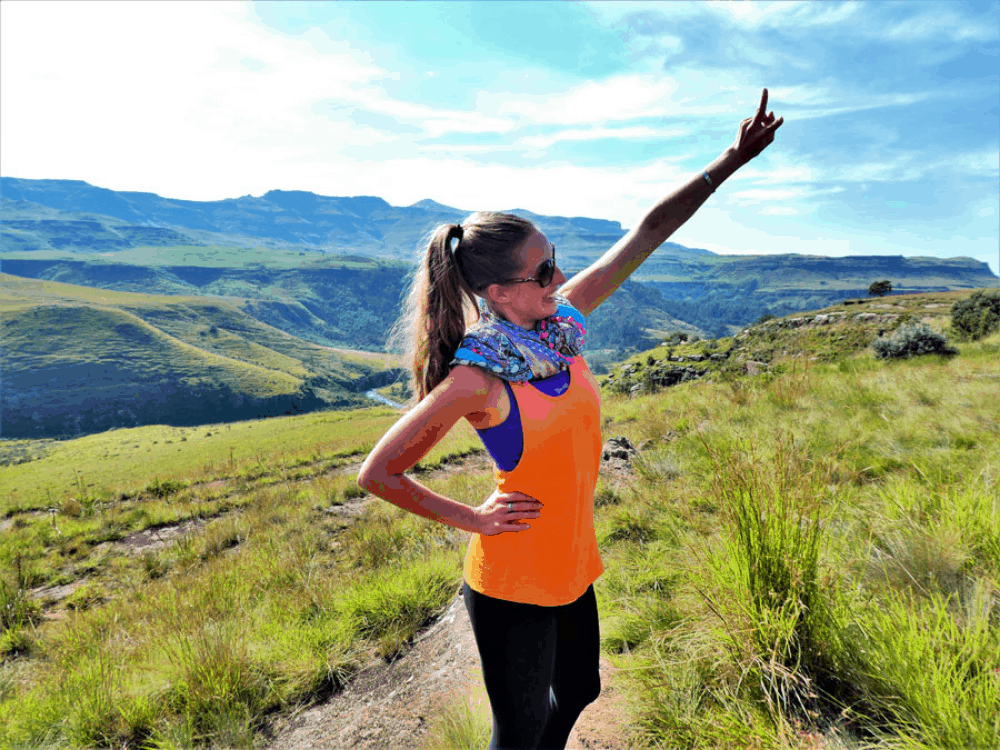
In my first six months of blogging, I knew next to nothing about keyword research to improve SEO. Then having found said keyword, how to implement these little gems of magic into a post so that it still reads naturally, add into that some image editing and optimization even before pressing that ‘Publish’ button.
The behind-the-scenes work isn’t over yet, next you’re on to social media promotion to get your newly-slaved-over post out there in the www, adding Pins to Pinterest, link building to get those all-important ‘do-follows’; the list goes on and it’s easy to see how much time gets devoured.
Becki from Meet Me In Departures
#13 All About Affiliate Marketing, SEO And Buying Keywords
When I started my family travel blog back in 2015 I didn’t know a first thing about SEO and monetizing my blog. I thought I did, having a background in online marketing, but really I didn’t.
What’s made all the difference for me is learning about affiliate marketing using buying guides. I wish I’d known about reader intent, buying keywords and how to SEO the hell out of my posts much earlier in my blog journey. Buying guides are aimed at helping people decide what to buy by comparing a number of products, highlighting key features, pros and cons.
Just search for ‘best travel stroller’ or ‘kids luggage reviews’ and you’ll find some great buying guide examples. From an affiliate marketing perspective these are great because they reach a highly targeted audience, with a buying mindset. And every time someone buys a product using one of your affiliate links, you get paid a commission.
Sure, it’s a lot of work, from keywords research to finding a niche product that’s not too competitive to incorporating a long list of keywords in a 4000+ word guide. But buying guides are what finally started earning me money and I wish I'd known about these when I first started blogging.
Lisa from Flip Flop Globetrotters.
#14 Travel Blogging Groups Are Gold
The one thing I wish I knew before starting my blog was how amazing the travel blogging community is, and I discovered this through Facebook groups!
For the first few months of blogging I was doing everything in a silo, and getting nowhere. When I joined a few Facebook groups and started networking with other bloggers, that’s when everything changed.

There is a Facebook group for just about anything when it comes to blogging. Collaboration opportunities, link building, guest posts, SEO sharing threads, and more. I even found a specific group for Toronto bloggers, which hosts regular meetups in the city. This has allowed me to connect with more people where I live, and make some new friends too!
Not only are Facebook groups great for networking and advice, but it provides a sense of community. We’re all in this together, and having a community to turn to for advice, or just to vent, can bring a huge relief when it comes to the stress of blogging
If you are new to blogging, I highly recommend joining Facebook groups related to your niche. Some of my favorite groups are FemaleTravel Bloggers, Digital Nomad Wannabe, and Travel Collab Post Opportunities.
Lora from Explore With Lora.
#15 Being Self-Hosted
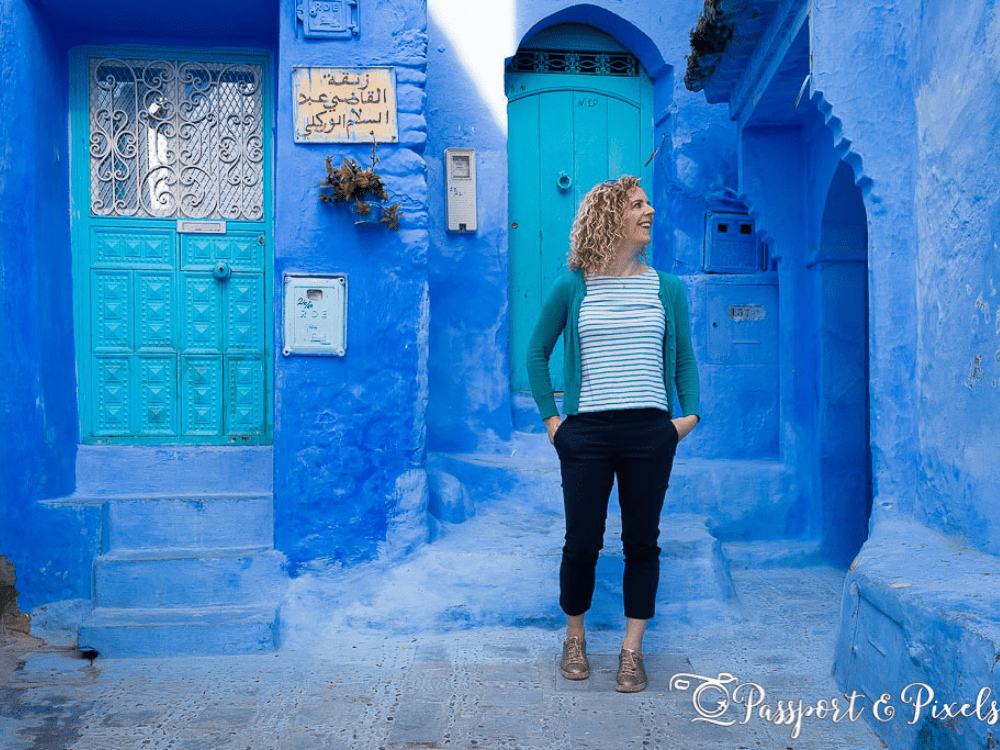
When I decided to start my blog two years ago I didn’t know any other bloggers, so I did what many people do: I Googled ‘How to start a blog’.
Many of the top hits suggested that for a beginner with no clue about anything, the easiest and cheapest way to get started was to get a free account on a blogging platform like Blogger or Wix.
Which is great advice in theory, as long as you never plan to do anything more with your blog than write the occasional basic post.
The problem with the free platforms is that you have almost no control. You’re limited to a few simple layouts, you can’t host adverts, you can’t look at your stats and see who your readers are, and you can’t build a mailing list.
All of which are vital if you plan to grow your blog and eventually make money from it. If that’s the case, then the best advice is to go self-hosted, meaning you buy your domain name and hosting separately, right from the start.
If you don’t, then later on down the line, when you begin to get frustrated with not being able to do all the things you want to do, you’ll have to transfer your blog across, which is confusing and complicated, and let me tell you a complete pain in the butt!
Bella from Passport & Pixels.
#16 Site Structure: Categories and Tags
There are so many things I wish I’d known at the start of my blogging journey! I can’t count the number of rookie mistakes I made out of ignorance!
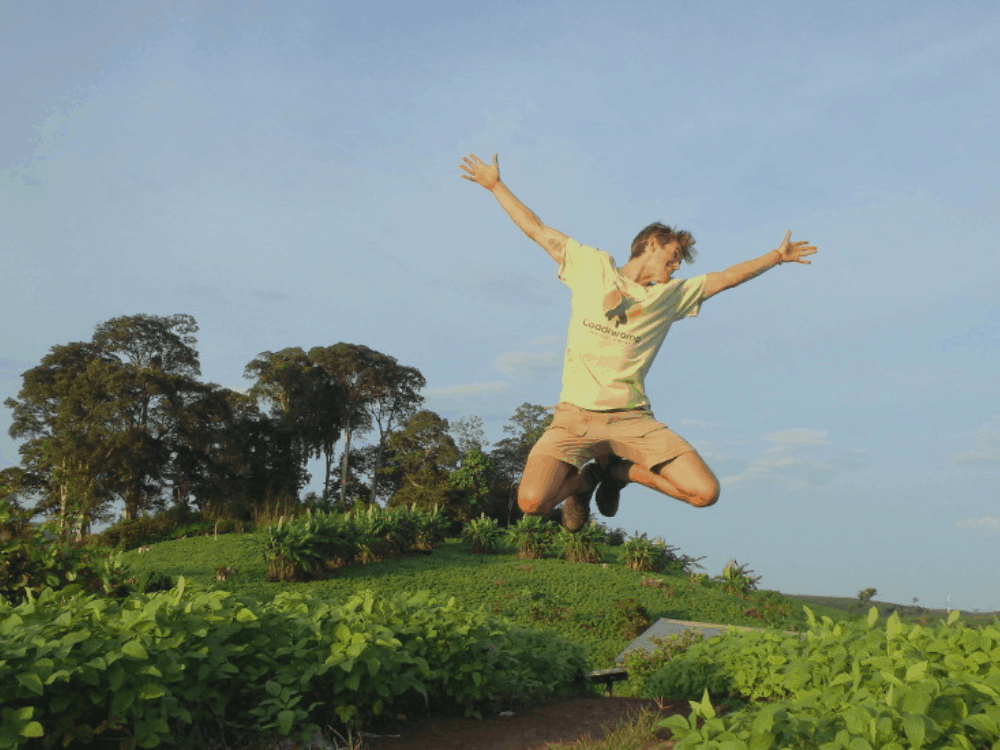
One thing I did wrong at the very beginning was in the organization/structure of the blog itself. I look back and cringe now because it seems so basic! I use Squarespace as my blogging platform and, essentially, instead of organizing one single blog by tags and categories, I created separate blogs for each category I wanted. I think I had about 5 different blogs on the go at once!
I wish I’d known how to properly structure my site at the outset. It would have saved me a lot of hassle! For newbies to blogging, adding categories enables you to divide your blog/site into main areas.
For instance: travel, home, health, and beauty are typical examples of categories. You create your blog, write a post for it, and assign a relevant category. Next, you can go one step further with particular tags. A tag provides greater insight into the nature of a post within its category. For example, you might assign your latest beauty piece with a ‘make-up’ tag.
Then, when it comes to structuring your website (in Squarespace, at least) you create a page and add content based on the particular categories and tags you’ve assigned to blog content. Doing so means you can easily separate, for example, all the makeup articles from the other beauty-related content, and all the beauty-related content from everything else.
This has multiple benefits. First, it makes your website easier to navigate. That’s good for users and great for Google. Secondly, it means you can feed all of your content into an RSS feed (when I had an actual blog for each category, I could only feature one category in my RSS). Thirdly, it just makes your life easier. A simple site structure is far more enjoyable to work with and spend time on.
Danny Newman from What’s Danny Doing.
#17 How Incredibly Profitable Blogging Could Be
Back when we first started blogging, one of the biggest challenges we had was finding motivation to publish regular content. Not that we didn’t enjoy blogging, but we started our blog as a place to share stories about our adventures. Sure, we knew that plenty of travel bloggers made money, but we had no idea to what extent.
Well, now that our blog is our sole source of income, I really wish we had known earlier on, just how profitable it could be having a blog!
Building it is tough, and there is so much to learn. However, once you reach a critical mass of traffic, the majority of what you earn is passive. Meaning we work less and less, for more money.
This has been so liberating in that it now allows us to travel 90% of the time and only worry about working on the side. I only wish we had known how profitable and amazing it could be so that we would have put a lot more work in early on.
So if you are struggling to find motivation, but know that you want your blog to one day replace your full time job, then trust me, it is worth the effort you put in now!
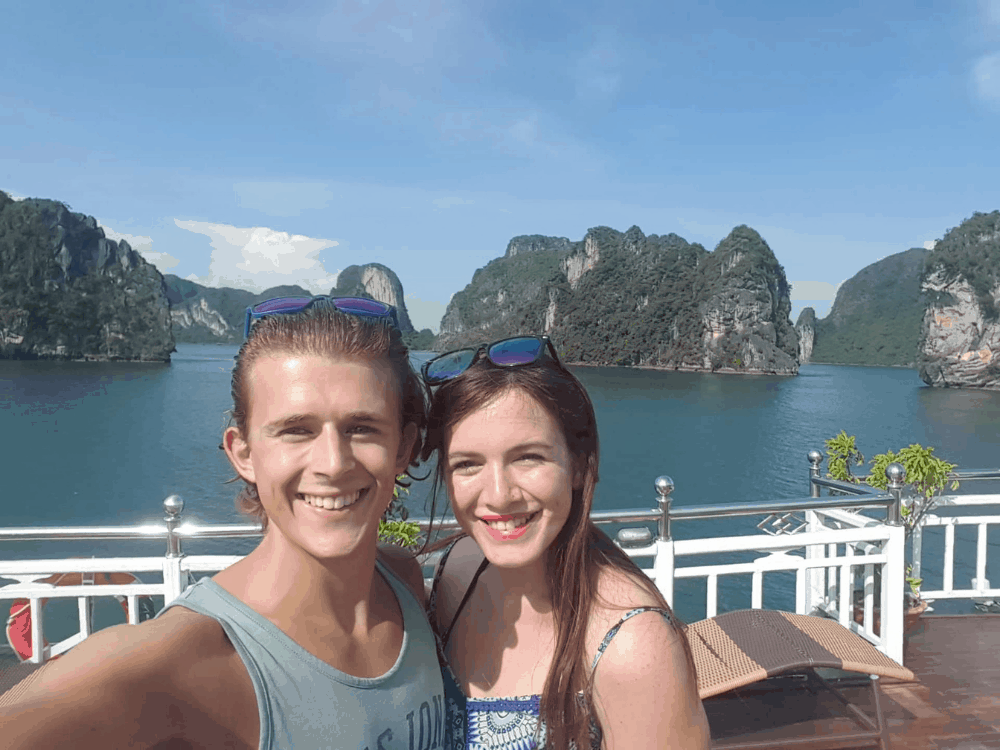
Bradley Williams from Dream Big, Travel Far.
#18 Choosing A Reliable Blog Theme
Today on the market there are thousands of WordPress themes out there. One thing I wish I knew before starting my WordPress blog was how to select the right theme for me.
As a traveler, doing many different digital nomad jobs on the road, if I had to count the number of times I had to get support, chop and change the blog layout and even delete things due to a poorly designed theme, I could have saved so much time. That way I would have been able to spend more time concentrating on creating content.
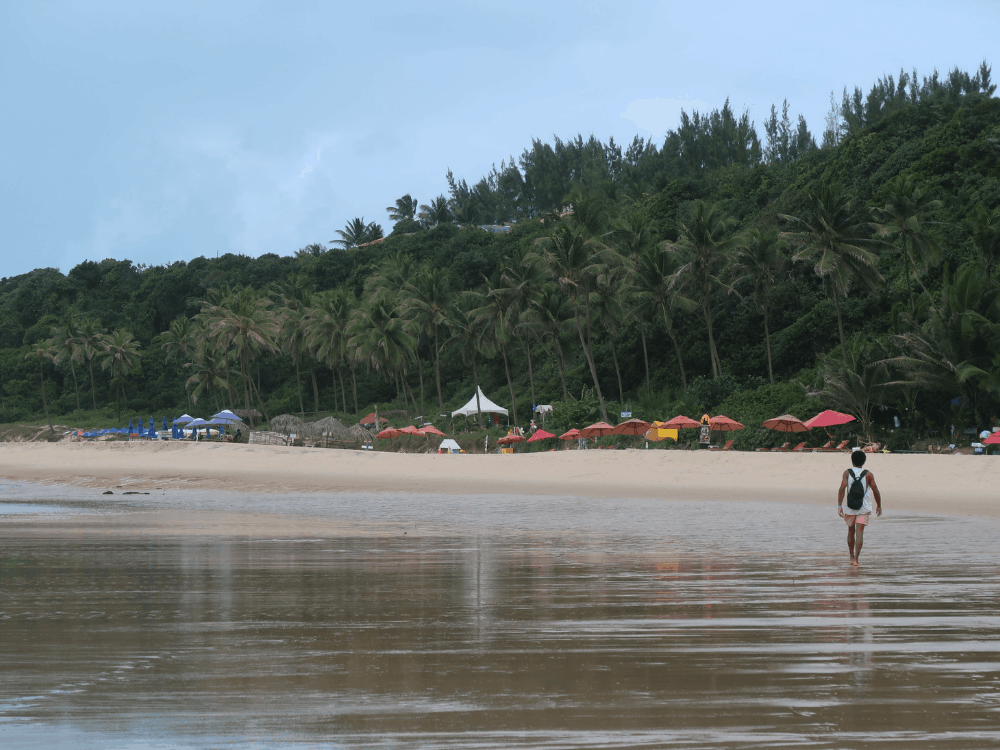
In reality, you could spend days searching for a theme, so how do you know which to pick? One good tip is to make a list of the features you’d like your blog theme to have before you start looking for one. For example, a theme that is easy to customize and will be compatible with other software and plugins you may want to add in the future is crucial.
The web moves so fast that you need to be sure that your theme is future-proof. The main thing to remember when choosing a reliable theme is to look out for reputable sellers like Studiopress. Because, when you first start out with blogging, having a bulletproof theme will save you a lot of time and headaches in the long run.
Daniel from Layer Culture.
#19 Getting Things For Free Is Great, But…
Ads on Facebook and Instagram tout travel blogging as a way to travel the world for free. You’ll see photos of luxury hotels, first class flights, and the always-present champagne flute. Travel blogging is all about free stuff, right? Not exactly.
Travel blogging is hard work; fun, but hard work. Especially as you’re starting, you won’t receive free offers. First, you have to put together a blog that others want to read. After all, no one wants to give away a product to a website where it won’t be seen.
Secondly, you have to research the location or product and pitch to them why you’re a better match than other bloggers out there. Finally, even when you get free stuff, it’s still work. You’ll need to write a review or post about the freebie you received.
This may mean getting up before everyone else to take photos without crowds, or letting your tour group go ahead without you while you click the perfect photo, or working while your friends have fun on vacation.
If you’re into travel blogging for the freebies, you’ll be disappointed. You should love blogging as a way to show others the wonders of travel. The freebies, when they come, are the sweet reward for your hard work.
Annick from The Common Traveler.
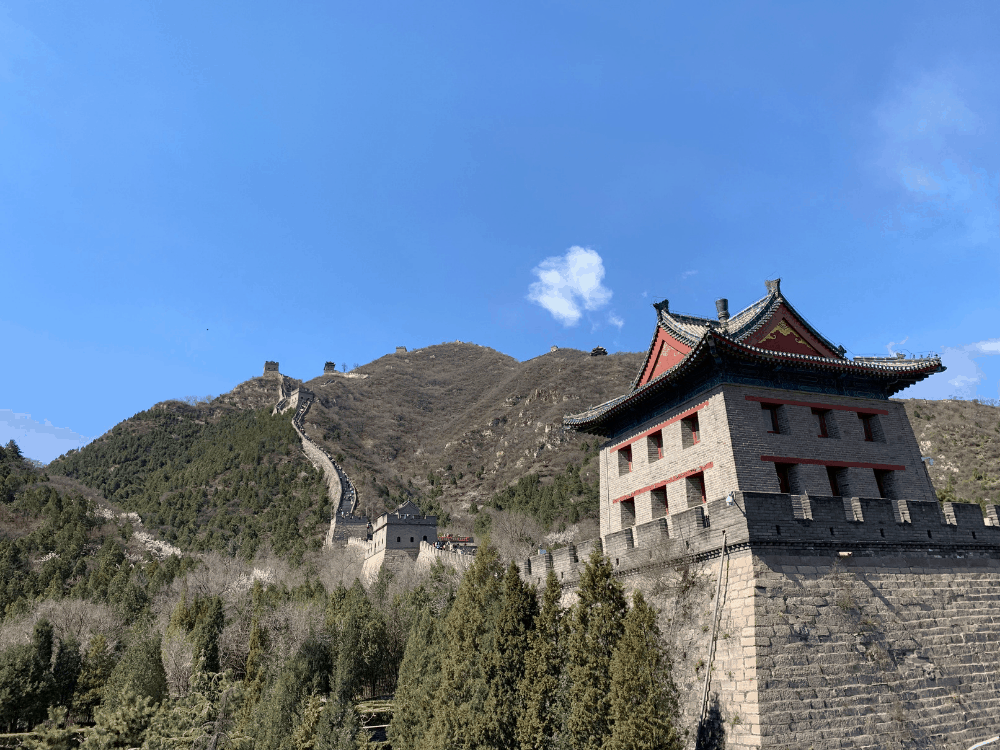
#20 How To Build Readership

One of the hardest parts of blogging is learning that growing readership is a slow and challenging process for many bloggers. When I initially started blogging, I had imagined having thousands of daily readers in the first couple of months- instead, there was more or less just a steady trickle of clicks coming in here or there on a couple of my posts that ranked well on Google.
Over the past year with my site, it’s been challenging at times to convince myself that it’s worth the time, expense, and stress of blogging on top of maintaining my 9-to-5 job, when growing followers has been a slow (and sometimes painful) process.
And while my blog still hasn’t become an overnight viral sensation, I have learned a few things that have helped my readership grow almost 900% from last year to just the first quarter of this year alone- probably the most meaningful difference I noticed was participating in collaboration posts with fellow travel bloggers (just like this one!), which helps boost one of a site’s metrics called “domain authority”, which, in turn, helps achieve higher rankings on search engines.
And while learning the ins and outs of search engine optimization is paramount to growing readership, there’s really only one key to becoming a successful blogger- never give up.
Don’t give up on learning more, don’t give up on growing, and don’t give up on creating thoughtful, helpful, and original content. If you have a unique voice (and you do!), the world should be able to hear it.
Jessica from Uprooted Traveler.
#21 Why And How To Do Link Building
One thing I wish I knew before starting a blog is how important building links to your site is. Link building in simple terms: getting other sites to refer back to your site (with a clickable link) within their post.
This collab post is a perfect example of link building. Everyone who is contributing to this post is building links back to their site.
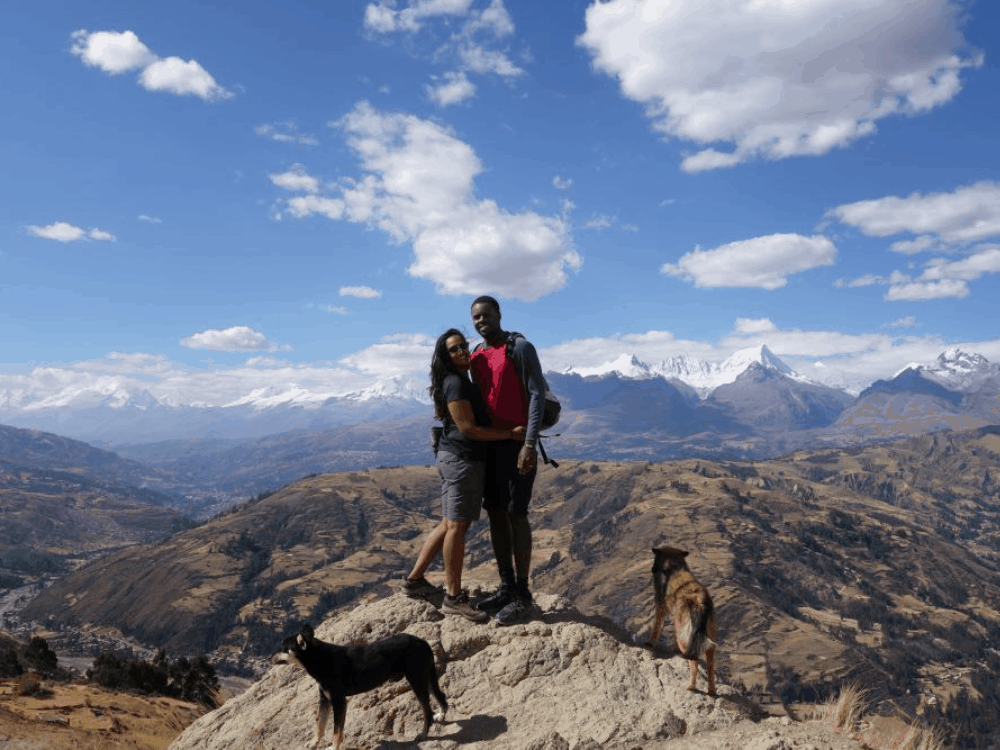
And backlinks are one of the best ways to tell Google that you're a real site, with legit information and you're not scamming people.
There are many ways to build links to your site, but not all are equal. Getting backlinks from sites with higher DA (Domain authority) are more valuable than sites with a lower DA but sometimes sites with a lower DA may be able to drive more traffic to your site.
Some ways to get backlinks are by:
- Doing guest posts
- Collaboration posts (like this one)
- Link swaps, where you ask another blogger to link back to your post about something relative on their post
- Broken links, finding links that are broken on a site and creating a great post to fill in that broken link
- Contributing your work to big sites like HuffPost and other big travel sites, airlines, hotels etc.
Link building is really important and will help your DA grow as well. The higher your DA, the more likely your site will start ranking on Google's first page which is everyone's goal!
Naomi from Eat Love Explore.
#22 Mobile Optimisation Is Important
When you start blogging, you'll most likely be working from a laptop. That's what you'll be using when you choose your blog's theme, when you edit your photos and when you write your first posts. However, that's not how most of your readers will see your blog.
The vast majority of people now view content from a mobile phone or tablet. This means everything is on a much smaller scale than desktop views. It also means that your fancy theme will (or should!) display very differently, with a mobile menu and most decorative snazzy effects simplified down.
Thinking with a mobile-first mindset when you start blogging will save you a lot of work down the line if you decide to stick at it (believe me, I know!).
Make sure your theme looks good and is fully responsive on mobile. Re-size your images to the minimum they need to be to fit your blog's width on desktop – any more is a waste of loading time.
Look into your site speed on mobile – it has to load quickly or you'll lose potential readers. Write clearly: use bullets, short sentences, white space, sub-headings. Finally, put time into researching what works well on mobile. There's a wealth of information and blogging tips online to get you started!
Caroline from Pack The Suitcases.
#23 Connecting Your New Blog To Google Analytics
Among all the crucial steps you need to take to start a successful blog, there is a technical one you don't have to forget. As my Master degree professor in Chicago taught me, linking your new blog to Google Analytics is essential as this platform allows visualizing your blog performance.
There are several reasons why you shouldn't skip adding this tool to your blog.
First of all, knowing your data is essential to understand how better you are doing. In details, thanks to Google Analytics, you can discover all about your readers from demographics to users acquisition.
Moreover, on Google Analytics, you can discover your more successful posts and a powerful tool that ultimately can help you to craft stories that interest more your audience.
Furthermore, you can share your insights with a future business partner. In the industry, it is considered as a reliable analytic instrument, and third parties sometime do not accept data tracked through successful plugins like Yoast.
Federica from A Stroll Around The World.
#24 Plan For Marketing Time
I started my blog on a whim without any prior planning or research. I literally started my Instagram account on the flight to Spain and went on to start writing my blog Outside Suburbia which about Luxury Family Travel.
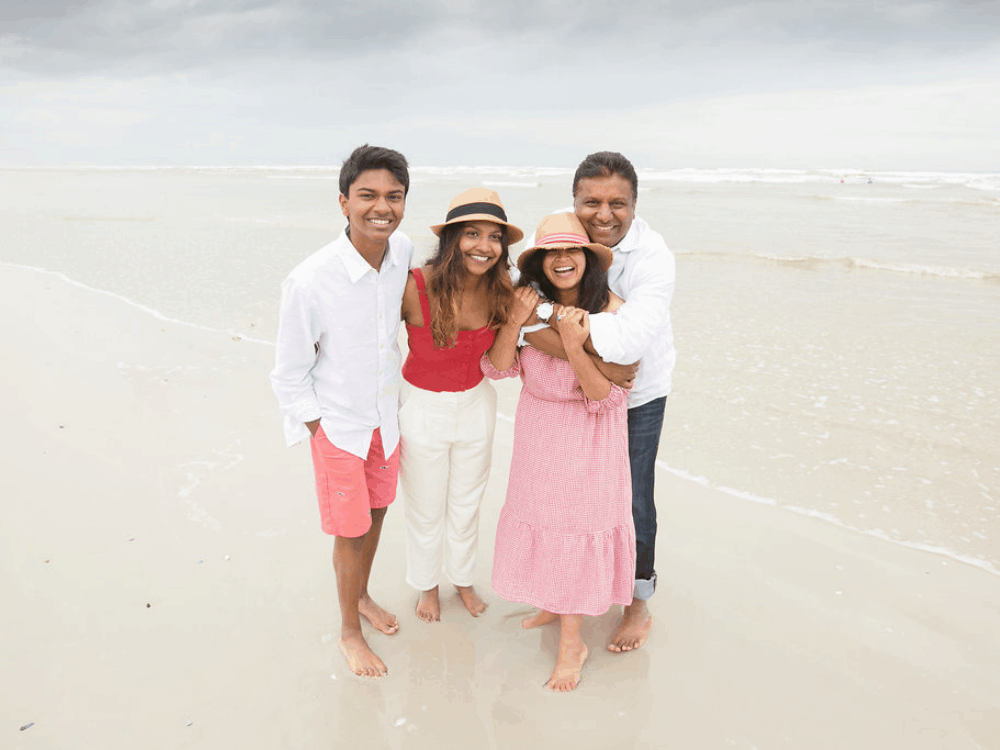
This was back in 2015 and my account grew fast organically, I got invited on media trips even before we hit 10K. Blog though is a different beast – I always kept journals of trips but had them in a private site, sharing it on the blog-o-sphere is a whole other ballgame! I thought I had good content but there were no clicks. Everyone tells you content is King, but no one tells you if you don’t market it then no one really cares about your content.
It goes into a black hole and you never see any traffic or clicks. So yes, go ahead and write great content, including SEO, but plan for marketing time. It is believed that a customer or client needs to hear/see something at least 7 times before the name or product sticks.
Your post must be shared 7 times to get noticed! Don’t burn yourself out though. Pick 2 social media channels and focus on it, choose between Instagram, FB, Twitter & Pinterest and share your post 7 times (in the course of a week or month) after you hit that publish button.
So, remember it’s not enough if you have awesome content, you also need to market it like a queen bee and create the buzz.
Priya from Outside Suburbia.
Don’t Go Without Travel Insurance
Why buy travel medical insurance from SafetyWing?
- Get insured, even if you already left your home country
- Covers visits to your home country if you’re travelling long-term
- Buy one-off or choose a start date and let your insurance extend every 28 days like a subscription until you cancel (no more paying upfront for long trips or open-ended adventures)
- COVID-19 cover is included
Please note, this post may contain affiliate links, which means that – at absolutely no cost to you – we earn a small commission on sales generated through this website. We only recommend sites we actually use and thank you for your support!